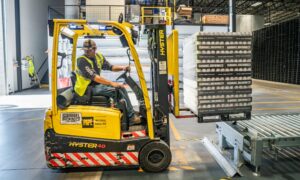Sustainability is a critical consideration in today’s manufacturing industry. With the world facing environmental challenges such as climate change and resource depletion, manufacturers are increasingly seeking ways to reduce their environmental impact while maintaining profitability. One of the ways that manufacturers can achieve this is by incorporating robotics into their production processes. In this article, we will explore the role of robotics in sustainable manufacturing practices.
Reducing Resource Consumption
One of the ways that robotics can contribute to sustainable manufacturing practices is by reducing resource consumption. For example, robots can be programmed to use raw materials more efficiently, reducing waste and conserving resources. They can also be used to optimize energy consumption, such as by turning off machinery when it is not in use.
Another way that robotics can contribute to sustainable manufacturing practices is through 3D printing technology. 3D printing can reduce the amount of waste generated during manufacturing by allowing manufacturers to create products on demand without excess inventory. This technology can also enable using recycled materials, reducing the need for virgin materials and conserving resources.
Improving Worker Safety and Health
Robotic systems can improve worker safety and health, another critical component of sustainable manufacturing practices. A robot arm can automate dangerous or repetitive tasks, reducing the risk of workplace injuries and accidents. They can also be used to monitor and control hazardous environments, such as those with high noise or vibration levels.
In addition, robots can reduce worker exposure to hazardous chemicals and other harmful substances. This can be achieved by the use of automation in material handling and mixing operations, which can be programmed to operate in a closed environment and reduce the risk of worker exposure.
Reducing Carbon Emissions
Reducing carbon emissions is another important aspect of sustainable manufacturing practices. Robotic systems can contribute to this goal by optimizing production processes, reducing energy consumption, and improving efficiency. For example, robots can be programmed to optimize production schedules, reducing machinery’s time and energy consumption.
In addition, robots can monitor and control environmental conditions, such as temperature and humidity, to optimize energy consumption and reduce waste. They can also be used to optimize logistics processes, such as material handling and transportation, reducing the carbon footprint of the manufacturing process.
The Importance of Complying with Sustainable Manufacturing Practices
The manufacturing industry has a significant impact on the environment regarding resource consumption and pollution. As such, there is a growing need for manufacturers to comply with sustainable manufacturing practices to reduce their impact on the environment and promote long-term sustainability.
Complying with sustainable manufacturing practices can also have economic benefits for manufacturers. Sustainable practices can save costs by reducing resource consumption, optimizing production processes, and improving efficiency. This can help manufacturers maintain their profitability while also achieving their sustainability goals.
The Role of Global Standards and Certifications
To ensure that manufacturers comply with sustainable manufacturing practices, many global standards and certifications have been established. These standards provide guidelines for sustainable manufacturing practices and enable manufacturers to demonstrate their compliance with customers, stakeholders, and regulatory bodies.
One of the most well-known standards is ISO 14001, which provides a framework for environmental management systems. This standard requires manufacturers to implement processes to manage and control their environmental impact and to continuously improve their environmental performance.
Another necessary standard is the EU Ecolabel, a voluntary labeling scheme that recognizes products and services that meet strict environmental criteria. The EU Ecolabel covers a range of products, including textiles, cleaning products, and electronic devices.
In addition to these standards, there are also several certifications that manufacturers can obtain to demonstrate their compliance with sustainable manufacturing practices. For example, the Cradle-to-Cradle certification assesses products based on their sustainability throughout their entire lifecycle, from raw material sourcing to end-of-life disposal.
In Summary
In conclusion, complying with sustainable manufacturing practices is essential for manufacturers to reduce their environmental impact and promote long-term sustainability. Global standards and certifications provide guidelines for sustainable manufacturing practices and enable manufacturers to demonstrate their compliance with customers, stakeholders, and regulatory bodies. Manufacturers can achieve sustainability goals by complying with these standards and certifications while maintaining profitability.
Incorporating robotics into manufacturing processes can significantly benefit sustainability, reduce resource consumption, improve worker safety and health, and reduce carbon emissions. Manufacturers can achieve sustainability goals by optimizing production processes and conserving resources while maintaining profitability. The continued development of robotics technology and its integration into manufacturing processes will be key to achieving sustainable manufacturing practices in the future.



































